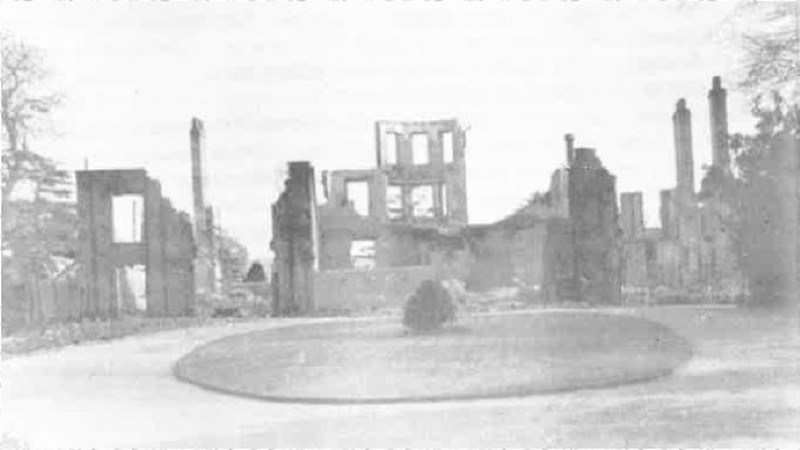
These two parks are really one; it is just a historical note that Library Gardens is the level area behind the Churchill Theatre; you then go down the slope to the integrated Church House Gardens.

Note that, part of this site, including the public conveniences (which the council has locked up for years) will be sold to the Site G development. Current proposals save the Deodore Cedar tree. The side of the new development will open out onto the fragment of park remaining.

Library Gardens was originally the gardens for Neelgherries House, and there’s an account of it’s history at the Friends Page, that the high street facing villa was purchased by George Sparkes, on retirement from working in Nilgiris (spelling has changed) and was bequeathed as a pleasure garden by his widow in 1900. It was laid out by Mr J Stenning, and opened in 1906. The house was replaced by the Carnegie Library and later demolished for the current Churchill Theatre and Library.

Church House Gardens were laid out by Abel Moysey from 1832. The Park Friends page explains that it was purchased by the council in 1926, and combined with Library Gardens in 1930. Some of the beloved features (eg the amphitheatre) were created as 1930s work schemes in the Great Depression. Both parks are showing signs of neglect in recent years.
The Model Boat pond now the Sandpit: the current children’s sandpit area was originally a model boat pond built in 1933 as one of the park features built in the Bromley Unemployed Works Scheme – thus the lovely tiles with ‘Rotterdam’ and other north sea ports on them. Then it was remodelled as a paddling pool in the early 1980s before the current, popular incarnation.
The Flower Clock: Traditionally Library Gardens was a much loved formal garden with a flower clock, the hands of which were set to the Library closing time.

Church House (whose gardens form the park) was lost in WW2 bombing: “Church House was a command centre for the Royal Observer Corps and it had been manned day and night since August 1939. As flames engulfed the house, fired by a stick of incendiaries, the men wisely abandoned their post and sought shelter. Firefighters got close to the scene but could not help because Church Road had been blocked by the ruins of the parish church. This well known mansion was virtually obliterated.” (from the Observer Corps)

The Rockery: London Parks and Gardens post says: “The large rockery below the terrace was created in the early 1950s from masonry reclaimed from the bombed-out parish church, and amongst the plants remnants of fluted columns, stone masons’ marks and sculpted quatrefoils can be seen“. Unfortunately this area has become unkempt and the remains are no longer visible under the rampant ivy.
The Bandstand. Originally a thatched bandstand on a little island, which was vandalised; then a roofed concrete performance stage was built opposite the amphitheatre. This became derelict and the roof was removed, though the base area was still used. Then the bottom area of the amphitheatre was filled in, instead, and the base allowed to become derelict too. Please see the full description on the Friend’s site, here.
Part of this park, Dickerson’s Copse., might be chopped down for the Site G proposals.
Some photographs, old and new, of our park:


























 Browse our old photos, in
Browse our old photos, in  from being dominated by tower blocks: Look here and email our ward councillors about:
*
from being dominated by tower blocks: Look here and email our ward councillors about:
*